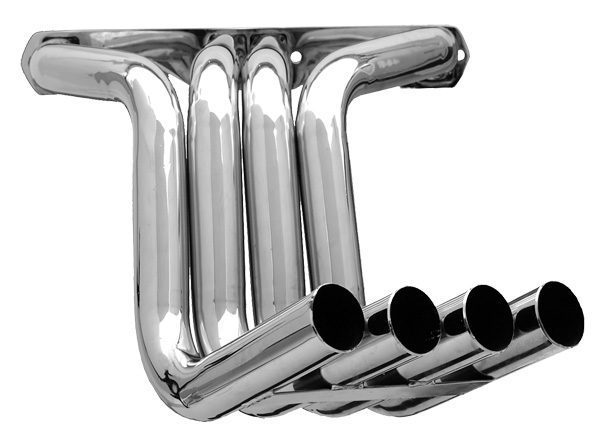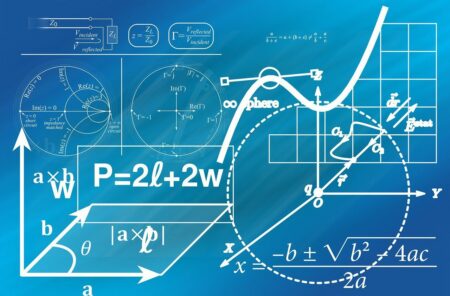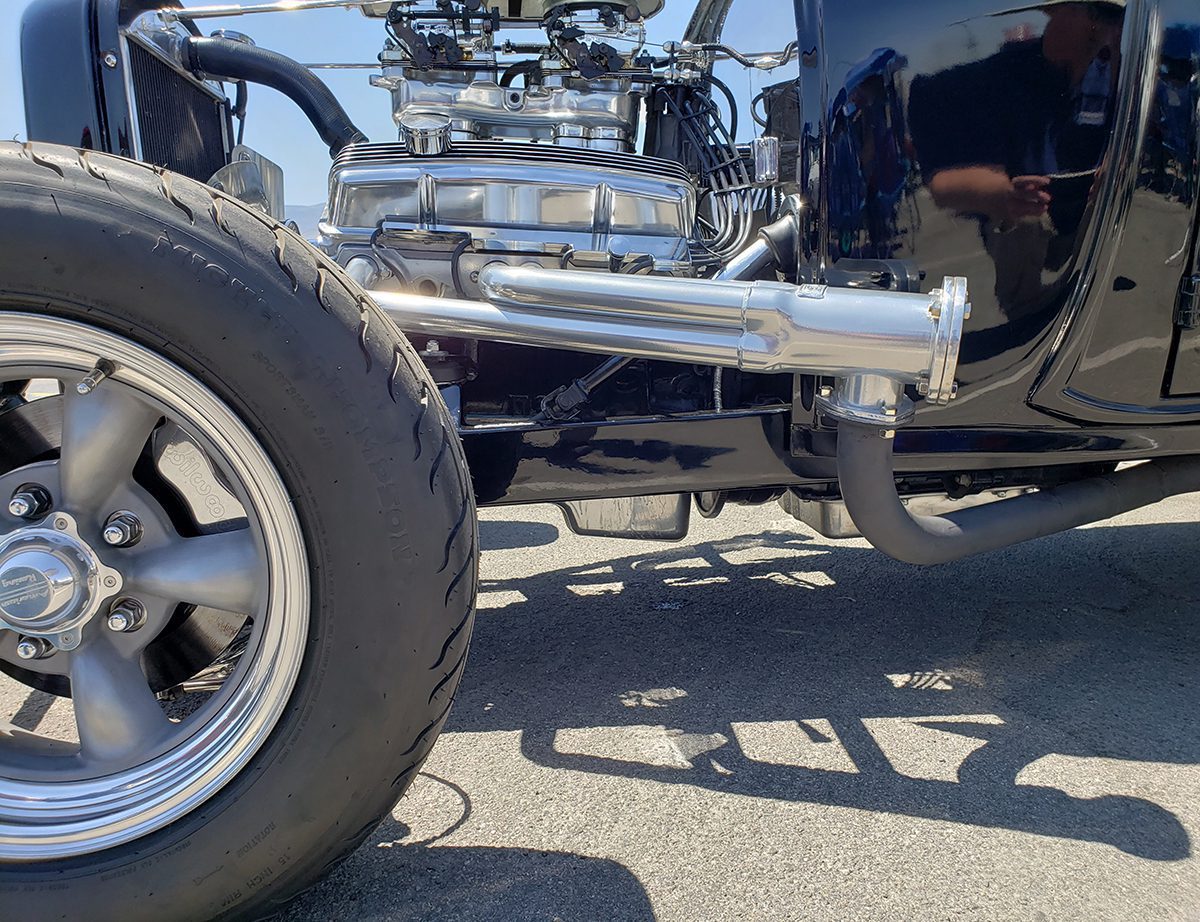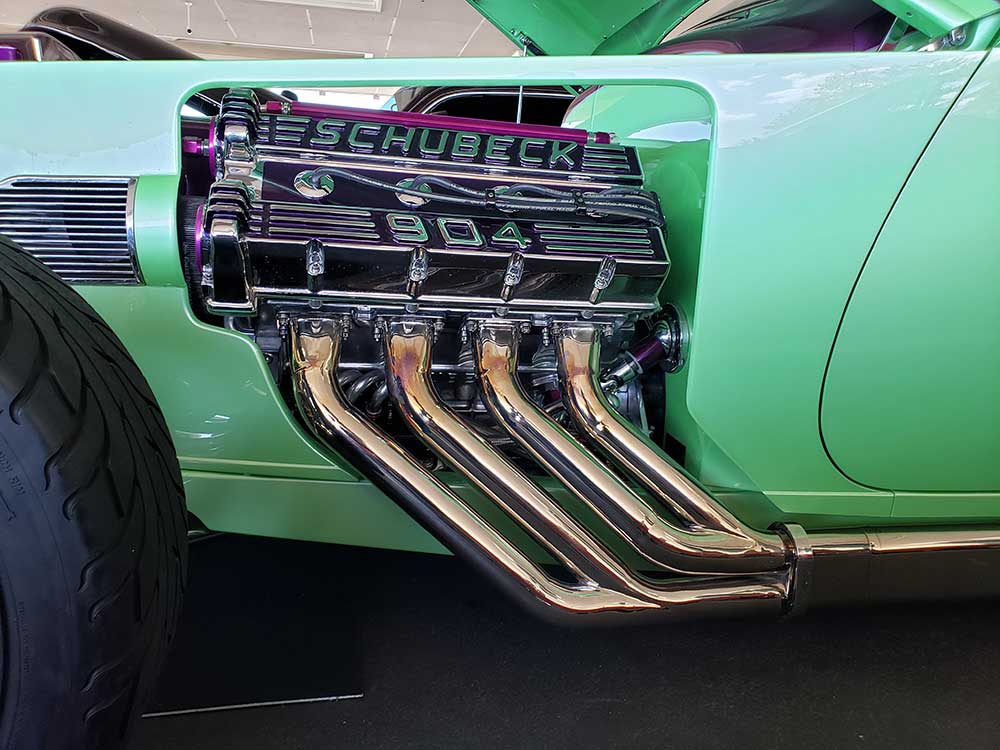How to Take Pictures of Your Street Rod

Choosing outside chassis exhaust headers for our street rod is sometimes not as easy as it looks. We may believe that our application offers plenty of room for a variety of header styles. We feel insulated from clearance problems more commonly associated with inside-chassis header sets.
For some vehicle applications the above is true. However, an almost infinite number of variables also exist for outside chassis headers that can affect proper fit and compatibility.
Imagine the surprise after spending a considerable amount of money on the header set we’ve dreamed of installing on our vehicle, waiting for its arrival, and then finding out it does not fit.
To prevent problems with outside chassis header selection and fit, we require images of the vehicle. After reviewing the images we can determine whether everything looks good or the customer will need to provide specific measurements or choose a different header.


Sometimes a quick glance or taking a few measurements is simply not enough. Here is a short list of common concerns related to outside chassis headers.
- Desired header style compatibility
- Engine type (availability of particular header style)
- Front axle location
- Front tire location (specifically, the relationship between the rear of the tire to the exhaust ports)
- Steering shaft location
- Firewall type (flat, curved, or extended to have once supported hood sides)
- Location of the door line
- Standard or suicide door swing
- Ground clearance
- Fenders?
- Running boards?
- Hood sides?
- Stock chassis or aftermarket
- Steel vs fiberglass body
- Desired exhaust exit location
- Desire to run under chassis exhaust piping & mufflers
- Sound level requirements
For this article we’re going to focus on the variables related to clearance, or what we need to see to make sure a header is compatible to the vehicle application.
Taking Pictures is Easy!
We want to see at least four views of the vehicle —two taken of the driver side and two of the passenger side. Although we may request additional images and specific dimensions, these four images are the starting point.

Camera Settings
Most people are going to use their smartphone to take pictures. It’s easy, provides high quality images, and just look around — almost everyone seems to be carrying and/or staring constantly at their phones.
The one problem with smartphone images is their file size. Default camera settings often offer extremely high image resolutions. This is great for the highest quality images for those who wish to make prints from them. However, it is not a good setting for electronic delivery (email, texting, posting to social media or other websites, etc.). A good analogy would be trying to park a full-size Boeing 747 in the bed of a pickup truck.
Modern smartphone camera sensors are able to take pictures from a few megapixels (MP) to over 48MP. Depending on the settings and other factors, this means that the file size for each image can exceed 16 MB (megabytes); or 16,000 kilobytes.
For comparison, the images above are all under 150 kilobytes.
Image Examples
The examples below identify what we are looking for in your photo submissions.

Driver Side -
Exhaust Port Level
- Take this photo with the camera at the same elevation as the exhaust ports
- The width should extend from the middle of front wheel to the door line
- This image may also offer an idea of the available ground clearance
- NOTE: In this photo we see the back of front tire extending back past the front exhaust port which would be a problem for a Zoomie and other header styles.
Driver Side -
Body Line
Stand over and in front of the driver side front tire to take this image. Aim the camera downward at about a 45° angle to include the cylinder head, tire, and body line. The image should include the front of the engine to the door line. This image provides us with:
- Another viewing angle for the front exhaust port to back-of-tire relationship
- Cylinder head to body line distance
- Steering shaft routing
- Distance from exhaust ports to outside of the frame rail
- Angle of the body line (some cabs are wider or offer more aggressive width changes between firewall and door)
- Fenders and/or running boards
- Any components that reside outside of the frame rail (radius rods, wishbones, hairpins, Pitman arm, cross-steering components, etc.)
- Motor mount style/type
- Anything else that may affect header clearance.


Passenger Side -
Exhaust Port Level
- Take this photo at the same elevation as the exhaust ports
- The width should include the middle of wheel to the door line
- This image may offer an idea of the available ground clearance
- Due to V-type engine cylinder offset we will look closely firewall clearance from the rear exhaust port
Passenger Side -
Body Line
Stand over and in front of the passenger side front tire to take this image. Aim the camera downward at about a 45°angle to include the cylinder head, tire, and body line. The image should include the front of the engine to the door line. This image provides us with:
- Another viewing angle for the front exhaust port to back-of-tire relationship
- Cylinder head to body line distance
- Steering shaft routing
- Distance from exhaust ports to outside of the frame rail
- Angle of the body line (some cabs are wider or offer more aggressive width changes between firewall and door)
- Fenders and/or running boards
- Any components that reside outside of the frame rail (radius rods, wishbones, hairpins, etc.)
- Motor mount style/type
- Anything else that may affect header clearance.

To Review
It is simple! Provide four (4) images to make sure the headers ordered (or those you would like to use on your vehicle) will actually fit.
After collecting the images of the vehicle, create a Support Ticket on our Helpdesk. The secure process involves answering a few basic application questions, making sure your contact information (phone and email) is correct, attaching the images, and then clicking the submit button.
Our staff is notified almost immediately. We will review the images and vehicle application information provided. Typically, someone will respond within minutes to a few hours. If we have any questions on concerns we will ask for clarification through the Helpdesk or by phone.
Our website already asks common engine questions regarding on the details page for each header set. Drop down menus ask about the cylinder heads, port shape, transmission, steering, and more. The only remaining and important variable is the vehicle itself. By providing images of the vehicle we are able to reduce ordering errors, clearance or compatibility issues, and save the customer unwanted expense. (Return and replacement shipping costs add up quickly.)
We look forward to helping with your project!

